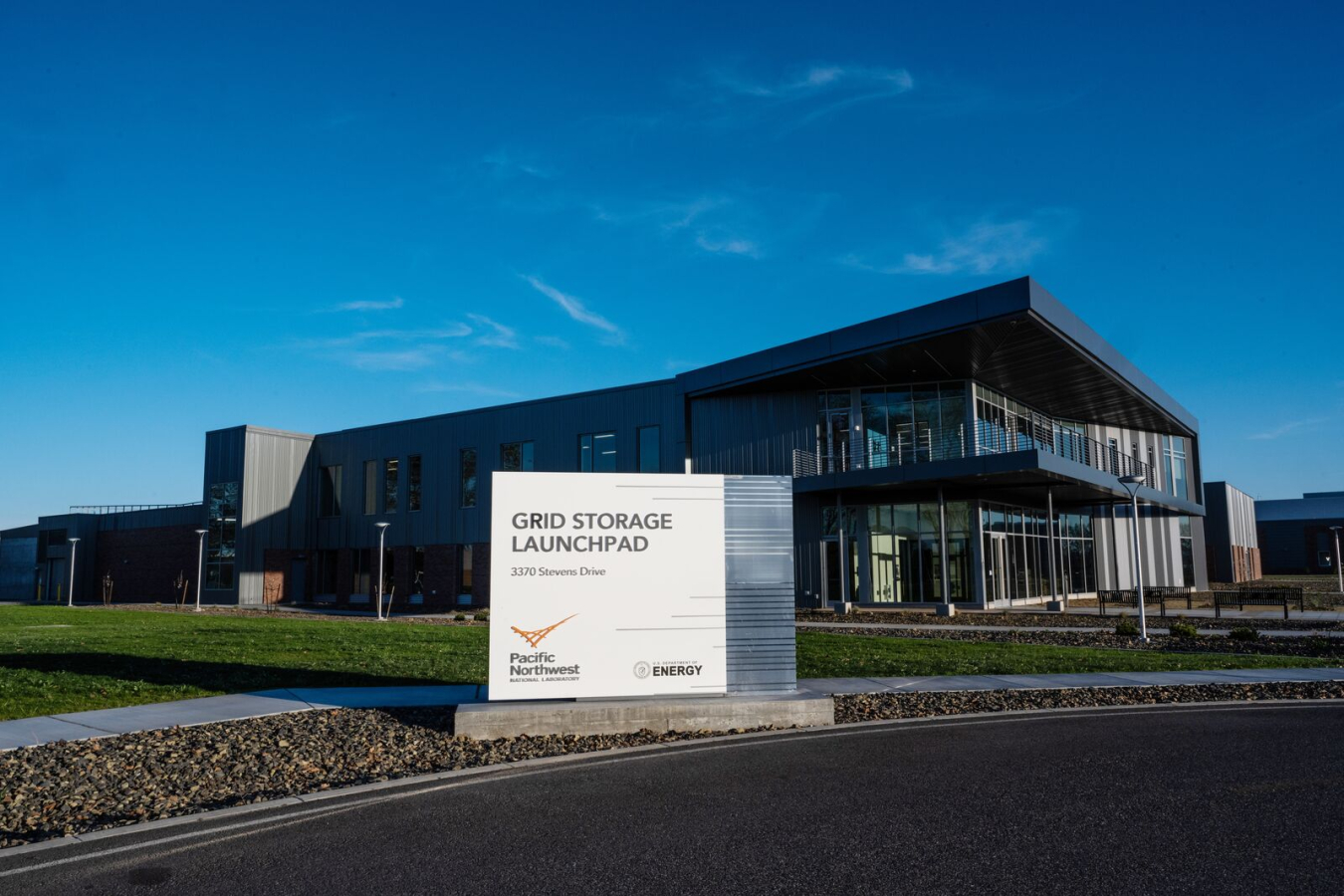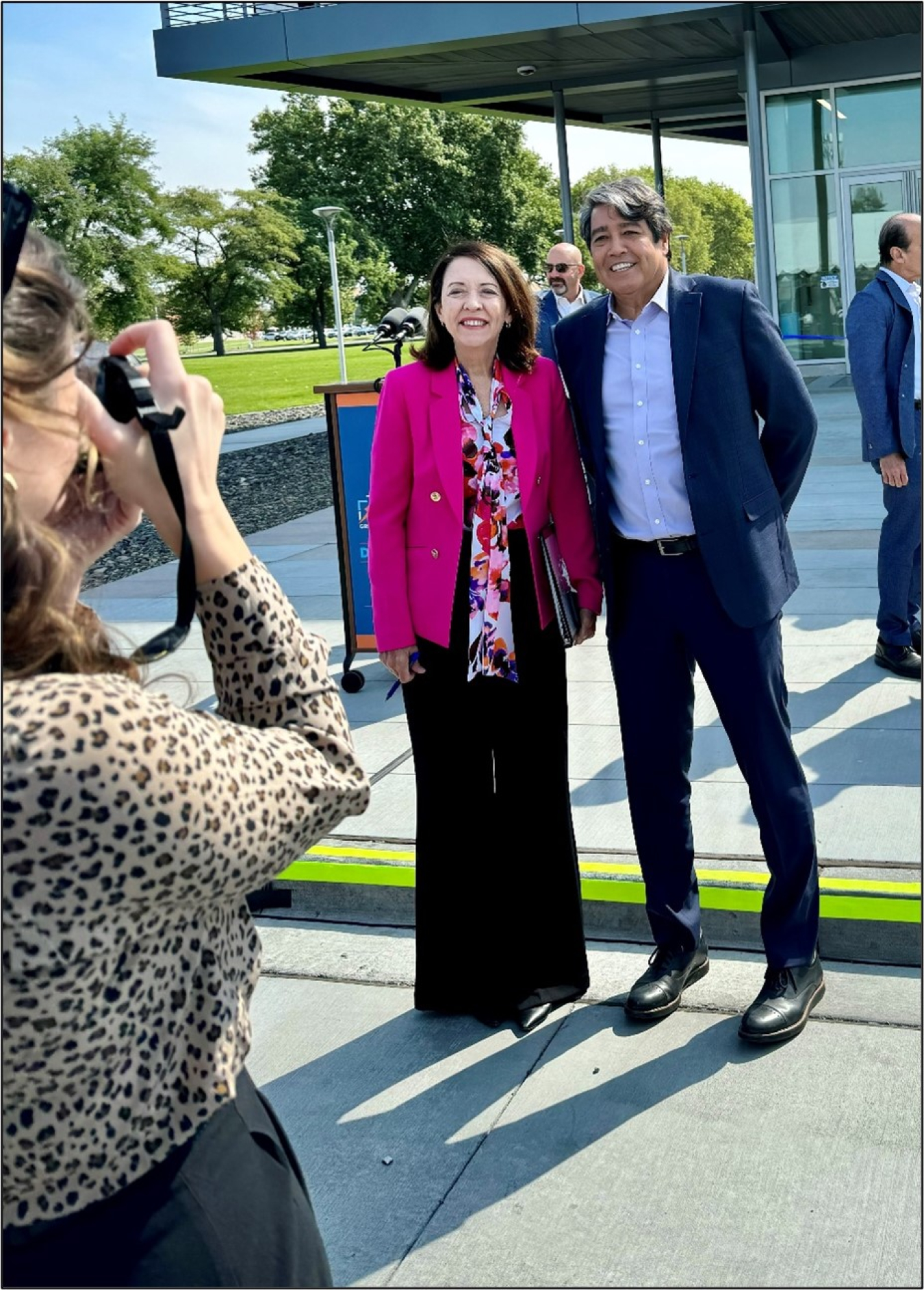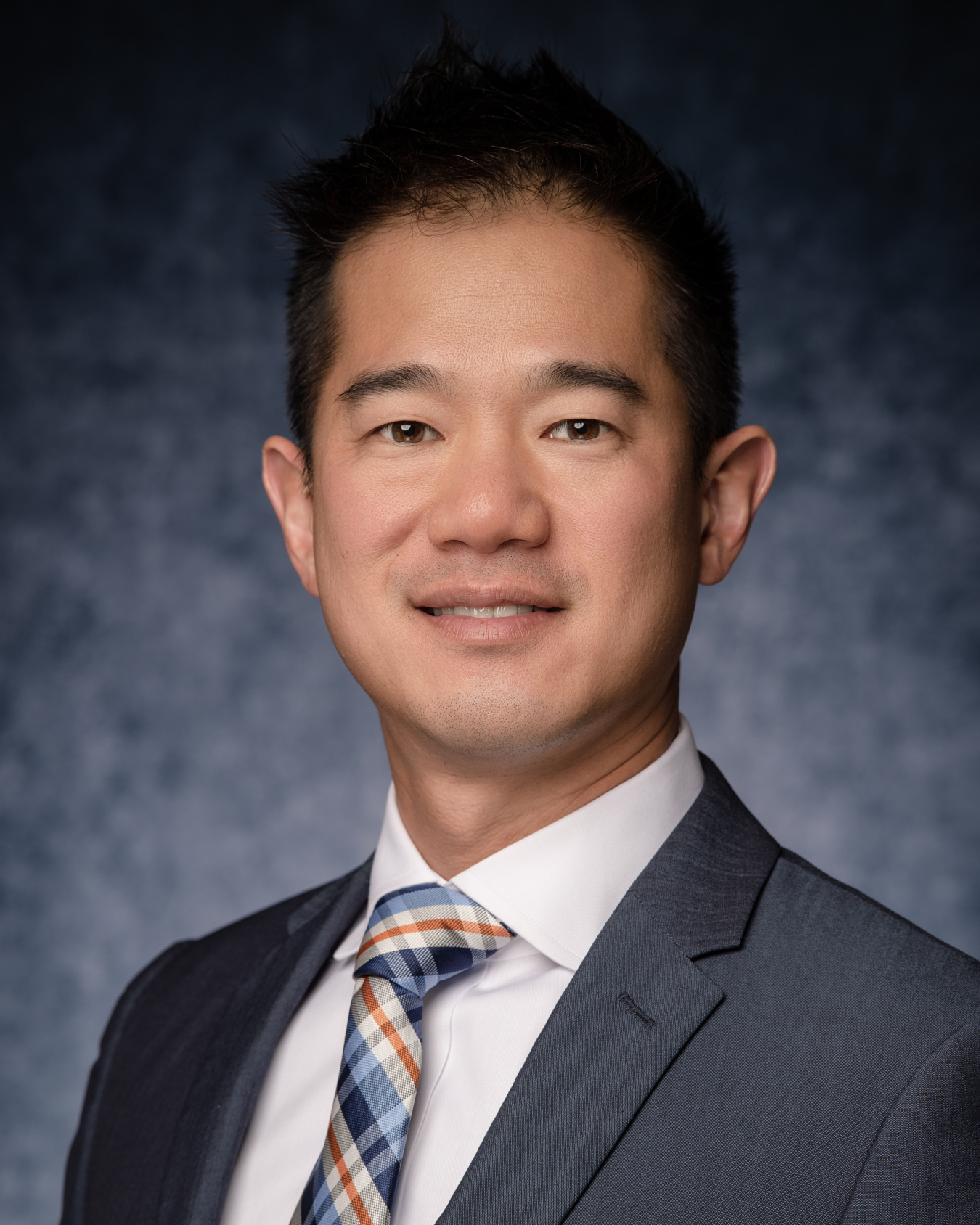As a national first, GSL brings together atoms-to-systems capabilities that will help the storage industry build safer, lower-cost, higher-performance, and longer duration energy storage systems.
September 23, 2024
On August 13, 2024, the Office of Electricity dedicated the Grid Storage Launchpad (GSL) at DOE’s Pacific Northwest National Laboratory (PNNL) in Richland, Washington. Every corner of this 93,000 ft2 building is packed with tools and expertise to accelerate development of next-generation grid energy storage technologies. As a national first, GSL brings together atoms-to-systems capabilities that will help the storage industry build safer, lower-cost, higher-performance, and longer duration energy storage systems.
The batteries in our pockets and backpacks give us freedom – the ability to explore and discover, while staying connected, informed, and entertained. Next time you’re stuck on hotel or late-night reruns, just think about how cell phones have made so many Seinfeld or Friends plotlines quaint and obsolete. Missed phone calls may be funny on TV, but who wants to wait around a landline anymore? Grid-scale energy storage is giving our energy system the same kind of massive upgrade – but instead of the freedom to roam, storage is giving us temporal freedom, to capture low-cost renewable energy, or to keep the fridge cold after a storm.
To meet the growing demand for energy, we need to create reliable and resilient batteries that can power critical infrastructure both large and small. We need this technology urgently, and we need it to be cost-effective, ensuring access for everyone.
The first unlock for this upgrade is the Long-Duration Energy Storage (LDES) shot, DOE’s challenge to create energy storage systems that retain 10+ hours of storage while reducing the cost of energy storage by 90% by the end of the decade. OE is working hard to help meet this goal. Thus far, in 2024, OE has awarded $30 million to six teams pursuing the LDES shot: three consortia to help create a diversified energy storage supply chain, reducing dependence on critical materials; and another three teams to validate emerging storage technologies. Alongside these major new awards, OE's Energy Storage Division:
- Works towards increasing the performance of energy storage systems, while reducing technology costs
- Helps de-risk technologies to ensure long-term safety and reliability
- Develops analytical models to uncover technical and economic benefits for energy storage
- Demonstrates the ability of storage to provide clean and equitable energy access for consumers and communities
- Supports workforce, entrepreneurial, and education outreach activities to facilitate storage adoption
- Coordinates with other parts of the Department of Energy (DOE) to create a technology-to-market pathway
GSL is a unique tool that can supercharge all these activities. By integrating atom-illuminating microscopes with utility-scale testing chambers with economic modeling teams with educational spaces, all under one roof, GSL will allow us to answer important questions faster. Questions like – will this storage technology perform well with non-toxic chemicals, or will a storage system last long enough to earn a positive return. The GSL objectives are summarized in four points:
- Validate: The GSL will enable independent testing of next generation grid energy storage materials and systems under realistic grid operating conditions.
- Accelerate: The GSL will speed the development of new technologies by propagating rigorous performance requirements.
- Collaborate: The GSL will bring OE, researchers, and industry together to tackle our nation’s energy storage needs. OE knows that the LDES challenge can only be met if every stakeholder works together.
- Educate: The GSL will train, educate, and develop the workforce of the future, from skilled labor to first responders, from safety officials to utility planners and regulators.
The part of GSL that excites me the most are the six new 100 kW testing and validation (T&V) chambers. They dramatically increase the number of grid-scale storage systems that can be validated by the national lab system. The T&V area also incorporates leading safety systems, incorporating lessons from OE storage safety research. When integrated with the other core capabilities, GSL will help prepare the next set of innovations to be grid- and market-ready, faster than ever. In my view, with GSL, the goals of the Long Duration Storage Shot will be well within reach.
The Richland community, DOE, and industry leaders celebrated GSL’s dedication on August 13. National, regional, and local leaders alike touted the benefits of this new state-of-the-art facility. And as a closing note, the facility is dedicated to Dr. Imre Gyuk, Chief Scientist for OE’s Energy Storage Division, for his contributions to the science of energy storage and his lifetime of public service. On your visit to GSL, look for his plaque as soon as you walk into the lobby.

The Grid Storage Launchpad is an upgrade not just for DOE, but for the U.S. storage industry. It will launch new projects that will revolutionize energy storage technologies and propel us to a clean energy future, where grid transformations and storage have given us the freedom to enjoy a reliable, resilient, secure, and affordable energy system.
For more information on the GSL, click Grid Storage Launchpad | PNNL. For more information on OE’s Energy Storage Division, click Energy Storage | Department of Energy.
Eric Hsieh

Eric Hsieh is the Deputy Assistant Secretary for Energy Storage in the U.S. Department of Energy’s (DOE) Office of Electricity (OE), where he leads efforts to accelerate the next generation of energy storage technologies that deliver reliability, resilience, economic, and efficiency benefits. Mr. Hsieh also co-chairs the crosscutting Energy Storage Grand Challenge, which coordinates departmental priorities such as the Long-Duration Storage Energy Earthshot. He is an energy policy, financial, and engineering thought leader with nearly 20 years of experience in improving energy delivery through innovation. Prior to his current role, Mr. Hsieh was the Director of Grid Components and Systems within OE.
As Director of Grid Components and Systems, Mr. Hsieh led strategy development and execution for grid hardware innovations including power conversion, energy storage, and robotics. He has more than 10 years of federal service, having also been the Director of the Office of Finance and Incentive Analysis, where he applied geospatial and computational techniques to modernize utility industry analysis.
Over the course of his professional career, Mr. Hsieh has held executive positions with several industry-leading firms and government associations. Before joining DOE, Mr. Hsieh was the Director of Business and Market Development at Nexans/The Valley Group, a global power transmission solutions provider, where he led worldwide efforts to deploy dynamic line rating technologies. Prior to that, at A123 Systems, a developer and manufacturer of advanced batteries for the electric grid, he helped the company reach its first 100 MW of deployed grid-connected battery storage. He has also held roles at National Electrical Manufacturers Association and the Federal Energy Regulatory Commission.
Mr. Hsieh authored and co-authored pieces published in journals such as IEEE Electrification Magazine, Electricity Journal, and ElectroIndustry; as well as delivering presentations at respected industry-leading conferences across the country. In 2019, Mr. Hsieh was named one of “Fortnightly’s Under 40” as part of Public Utilities Fortnightly’s “next generation of up-and-comers in the utilities industry.” Mr. Hsieh holds a master’s in public policy from the University of California at Berkeley, as well as a Bachelor of Science in Computer Science and Engineering (with a concentration in AI) from the Massachusetts Institute of Technology.

